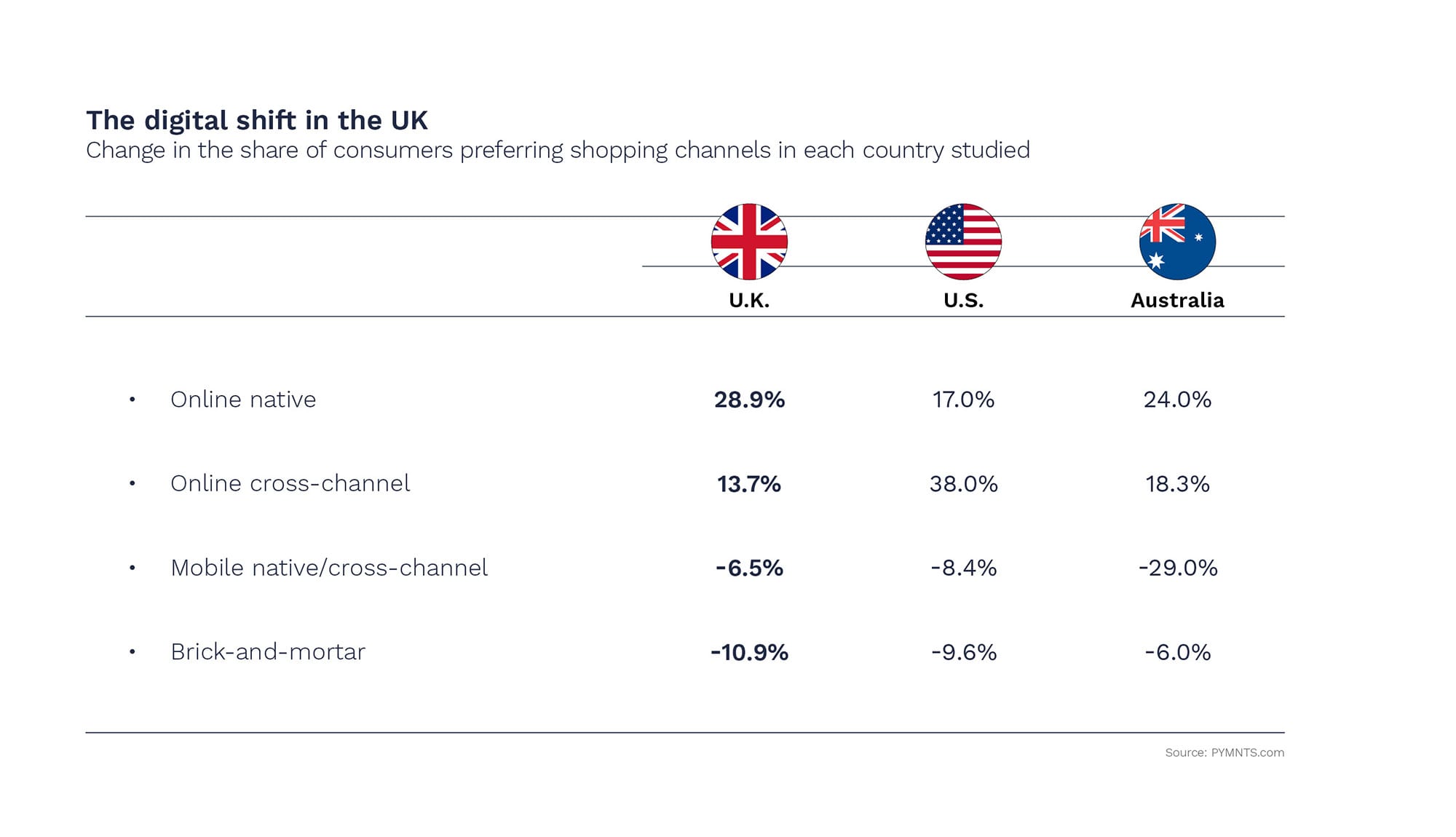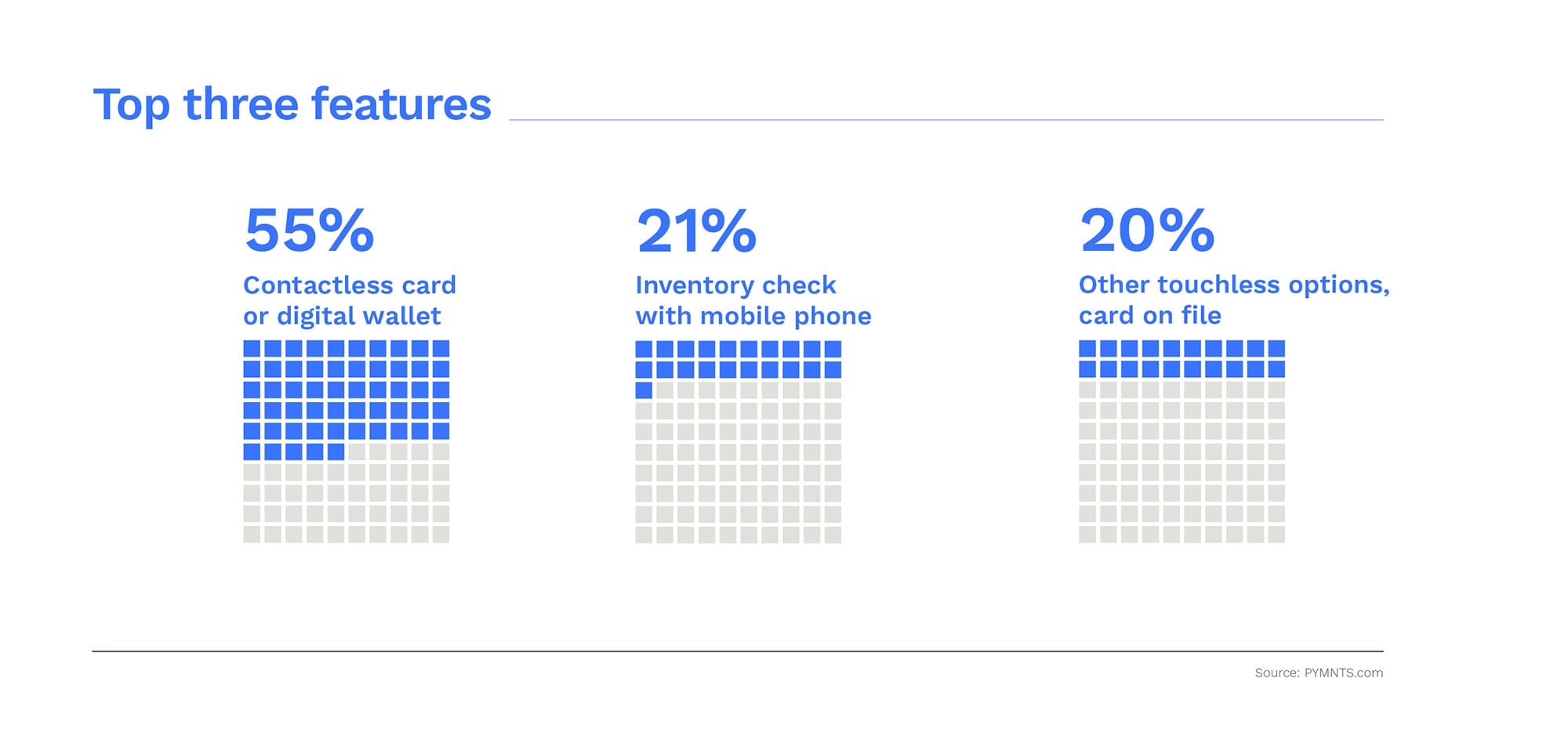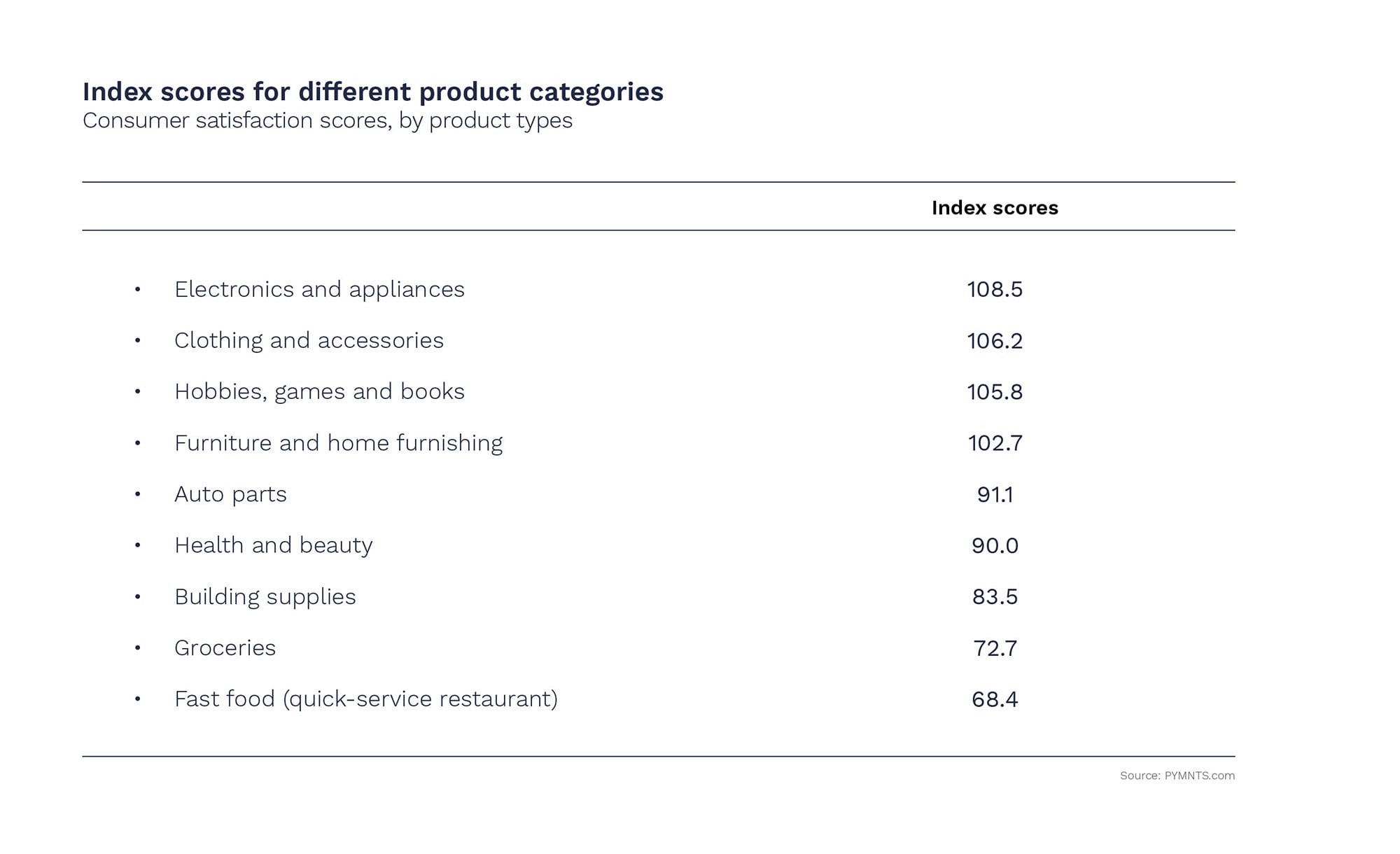
Adventuring to different markets worldwide, PYMNTS continues to document how the digital shift that caught fire in 2020 continues shaping spend trends and consumer sentiments.
The January 2021 Global Digital Shopping Index: United Kingdom Edition is based on a survey of more than 2,000 consumers and 560 merchants in the U.K. Among important findings of the new study is this: “The U.K. stands out in our study for the scale of its digital shopping shift: 54 percent of U.K. consumers now prefer wholly in-store shopping experiences. The rest are more inclined toward digital native shopping experiences in which they shop online and have products delivered to their homes.”
It’s that other 46 percent — digital-first converts — tipping the scales toward eCommerce, delivery, pickup and the many new ways we’ve grown accustomed to in under a year.
Similar to how the U.S. edition found that “merchants with the highest scores offer a balance of online and in-store sales,” the new U.K. edition notes, “Our findings do not portend the end of ‘high street’ shopping in the United Kingdom. They do suggest that U.K. consumers are more often taking a digital first approach to shopping by starting their shopping journeys online and looking for digital tools” that can make the entire experience seamless.

Britannia Rules The Waves For Digital-First
Just as London and other European cities are hotbeds of FinTech innovation, the U.K. consumer is quite keen on mobile banking and spending tech.
“Thirty-five percent of U.K. consumers, on average, are ‘very’ or ‘extremely’ interested” in digital-first features,” per the new Global Digital Shopping Index, with contactless card payments topping that list. “We found that 55 percent report using this feature — a large share that reflects the widespread availability of the technology among consumers and merchants in the United Kingdom. Interest in these features also spotlights a larger desire among U.K. consumers to access digital features that can imbue shopping experiences with the level of provided information, convenience and value they associate with online shopping.”
PYMNTS researchers found three features are the most favored. Per the U.K. Index, “The most popular digital feature is rewards, with 36 percent of U.K. consumers currently using them and another 31 percent being interested in doing so. This is followed by free shipping for digital orders: 30 percent currently use such services and 35 percent are interested in them. The latter feature may not be practical for all merchants, but its popularity demonstrates the degree to which U.K. consumers want options that allow them to circumvent the frictions and potential hazards they may associate with going to the store.”

U.K. Merchants Can’t Afford To Lag
Over and again in pandemic-era research we find situations where merchants and providers think they’re doing a good job at something, and consumers couldn’t agree less. Take digital-first shopping experiences. Merchants think they’re on it. Consumers, not so much.
“Seventy-one percent of merchants say they offer click and collect, for example, yet just 54 percent of consumers say that merchants offer such services,” per the Index. “Wider gaps exist for other popular features, such as inventory checking capabilities: 69 percent of merchants say they offer them, but only 35 percent of consumers say the feature is available.
Closing that gap is the urgent business of merchants and their technology partners, as we also know that the impatient, experience-obsessed shoppers of today won’t tolerate the gap.
As the U.K. Global Digital Shopping Index states, “The greatest shift has occurred in online native shopping journeys, in which consumers shop for products on computers and laptops and have them delivered to their homes. Use of this channel grew by 29 percent since the pandemic’s onset, making it the most preferred shopping method for nearly one-quarter of U.K. consumers. This represents an even more dramatic shift than the one seen in the United States.”
By merchandise category the shift is even more pronounced, meaning that merchants can’t afford to lag in any of these areas if they want to fully exploit the digital shift in shopping.
